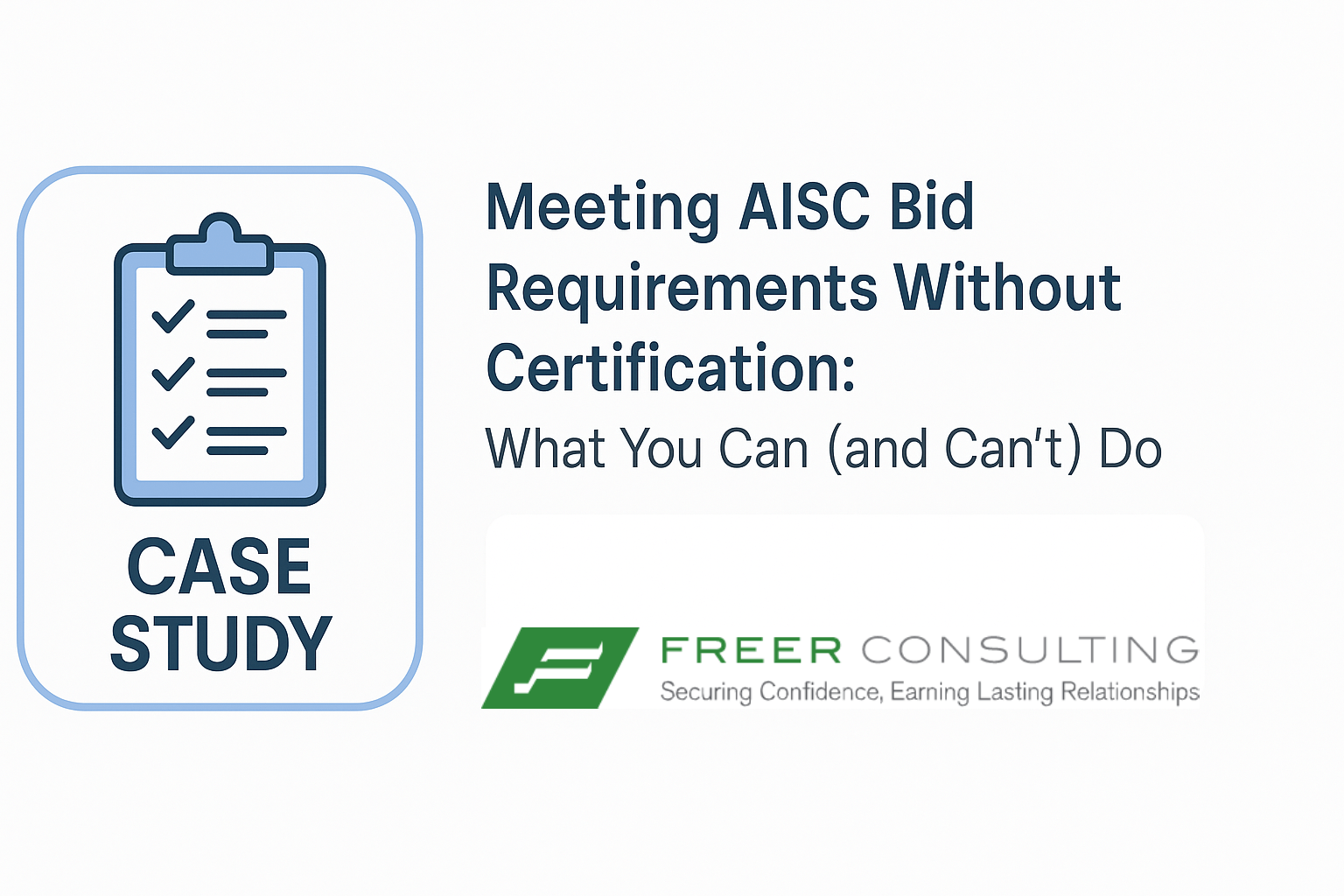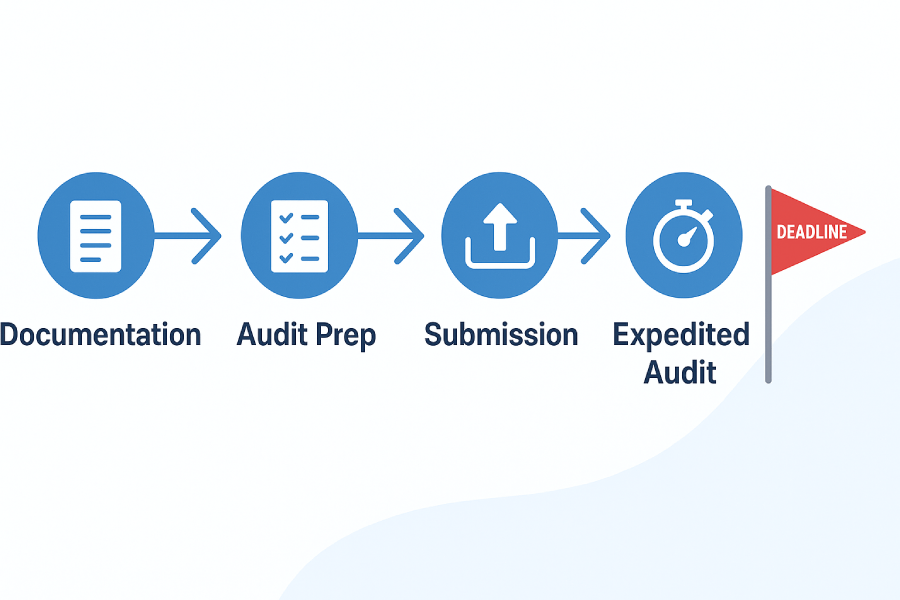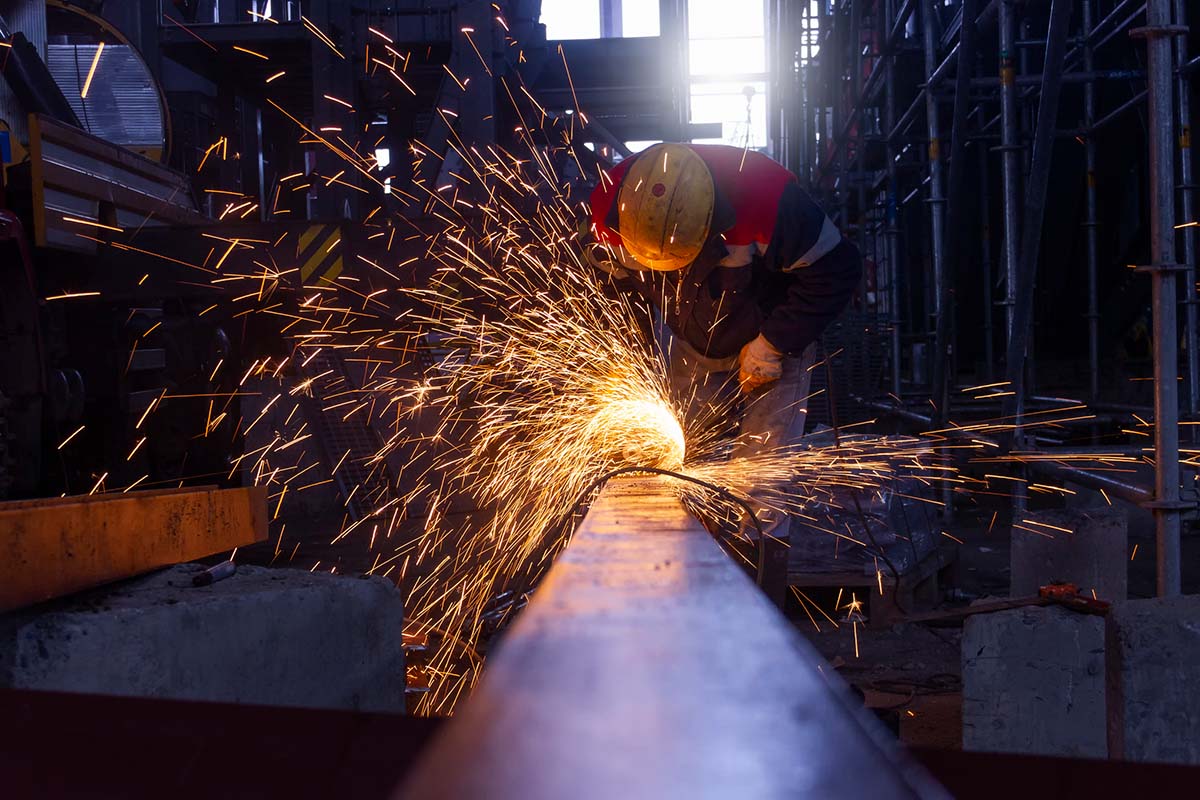AISC Certification Consulting
Freer Consulting Co. can help your organization attain AISC certification if you are involved in the manufacturing, fabrication, or erection of structural steel.
- Custom Support, Auditing, and Implementation
- We Make Certification Simple
The American Institute of Steel Construction sets the highest standards in the steel industry, from fabrication to construction. AISC standards cover all aspects of steel construction from manufacture of steel structural parts, to the fabrication of the final product. Freer Consulting Co. can help your organization attain AISC certification if you are involved in the manufacturing, fabrication, or erection of structural steel.
Get Started
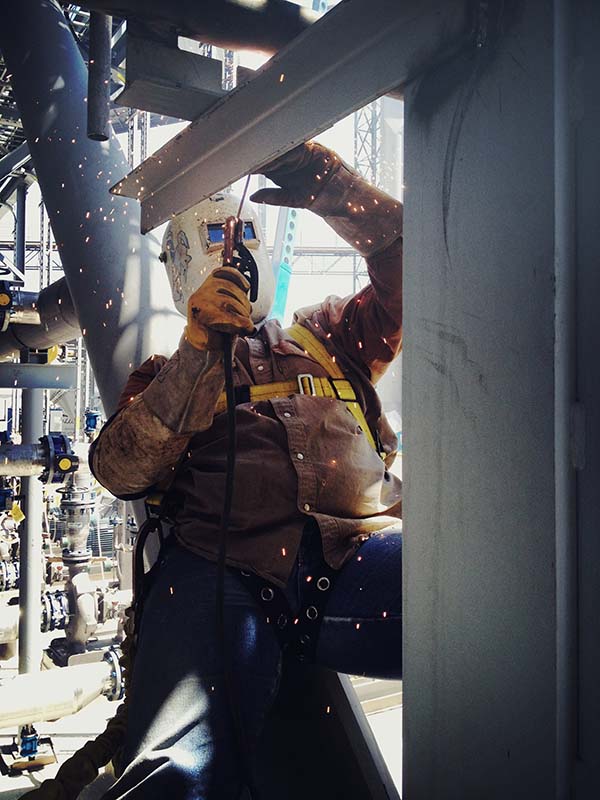
The Benefits of AISC Certification
As a leading authority, the American Institute of Steel Construction (AISC) sets the standard for quality in the US structural steel industry. When a company works to obtain AISC certification, the benefits are numerous:
- Increased consistency through documented processes.
- Enhanced communication and continual improvement through management reviews, training, and audits.
- Improved customer deliverables through greater purchasing protocols and AWS-compliant welds.
- Access to customers required to work with AISC-certified vendors.
AISC certification is often accompanied by a positive company culture shift, where extra effort is made up front to ensure higher quality, prevent nonconformity escapes, and increase customer satisfaction.
If you would like to learn more about how Freer Consulting can help you obtain AISC certification, contact us at (206) 679-2357 or [email protected].
What We Provide
Complete Certification Support
We ensure your business achieves complete certification to the AISC standard with a customized management system.
Ongoing Consultation & Technical Support
We work to develop technical solutions, both flexible and proven to succeed, that meet your business requirements and improve efficiency and accountability.
Customized Software
Freer specializes in leveraging advanced industry knowledge and custom software to meet your business needs and goals.
Is AISC certification difficult for a small business?
The difficulty of AISC certification for small businesses can vary depending on several factors. AISC certification involves meeting specific quality and safety standards in the field of steel construction. While the certification process itself is designed to be rigorous and comprehensive, whether it’s difficult for a small business depends on its existing resources, capabilities, and readiness to meet the requirements.
Here are some factors to consider:
- Resources and Expertise: Smaller businesses might have limited resources in terms of personnel, time, and budget. Meeting the documentation, procedural, and safety requirements of AISC certification can be more challenging if the business lacks the necessary expertise or capacity.
- Process Alignment: Small businesses might need to make adjustments to their existing processes to align with AISC standards. This could involve updating quality control measures, safety protocols, and documentation practices, which can be time-consuming and require significant effort.
- Training and Education: Ensuring that employees are aware of and trained in AISC standards is crucial. Providing the necessary training might require additional resources and time investment.
- Documentation and Record-Keeping: AISC certification typically requires thorough documentation of processes, inspections, and quality control measures. For small businesses, setting up efficient record-keeping systems can be a challenge.
- Auditing and Compliance: The certification process includes audits by AISC representatives to assess the business’s compliance with standards. Small businesses might find the audit process challenging if they are not adequately prepared.
- Continuous Improvement: AISC certification isn’t a one-time achievement; businesses need to maintain ongoing compliance and improvements. This could require ongoing investments in resources and processes.
Freer Consulting recognizes the challenges faced by small businesses and offers assistance specifically tailored to their needs. Our extensive experience in AISC certification support has created a turnkey solution designed to guide small businesses through the certification process by providing step-by-step guidance, templates, training, and support.
While AISC certification can present challenges for small businesses due to resource constraints and process adjustments, with the right support and approach, it’s possible for small businesses to successfully achieve and maintain certification.

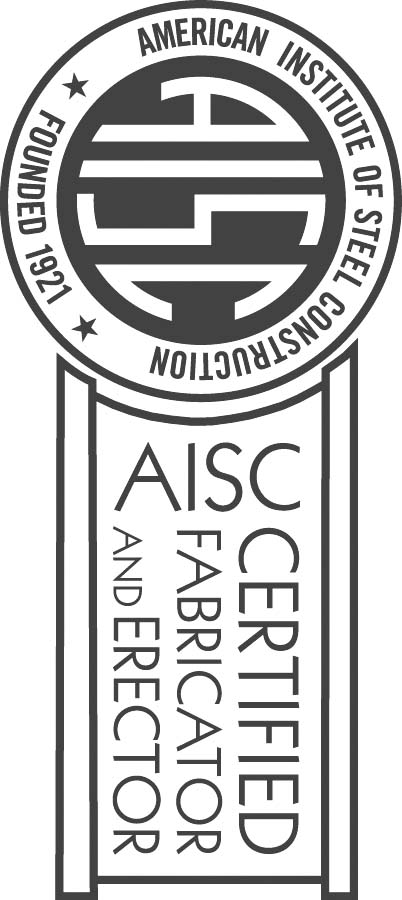
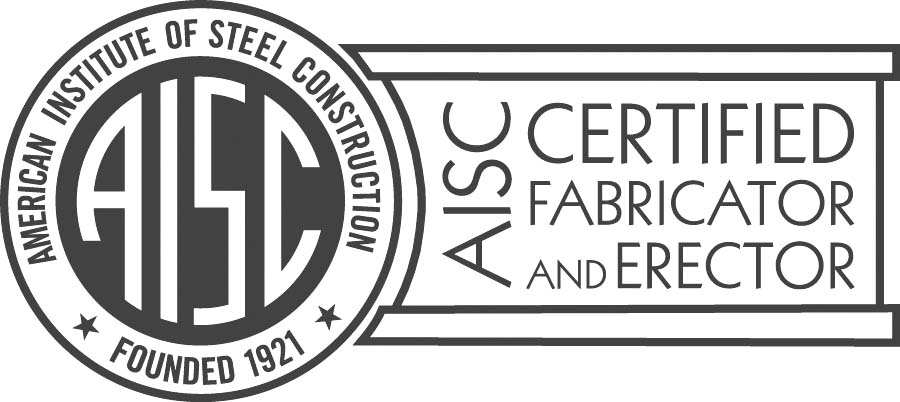
Bidding without AISC certification isn’t always a dealbreaker – but it is a challenge that requires a smart, well-supported response.
Here’s how Freer Consulting helped one company navigate that exact situation, and what you need to know about when (and how) a workaround is possible.
The Freer team was excellent to work with. We had our AISC certification within 9 months. They made the process smooth and seamless.
Flexibility: The Freer Team was adaptable to our needs.
Hard Work: They put in significant effort to achieve our goal.
Timely Responses: They were prompt in their communications and actions.
Complete, Customized Support

Management Solutions
We deliver customized management solutions to address the needs of any industry. We leverage market expertise and technological innovation to answer the needs of our clients in a complex international environment.

Documents and Accountability
Freer Consulting provides clients with a variety of communications tools to share their objectives, implementation strategies, and final results. We work with businesses to develop project goals, performance metrics, expectations, and more.

Education and Training
In cooperation with our project collaborator, Sustainable Media Partners, Freer Consulting produces a variety of education and training materials in a variety of formats, including print curricula, tip sheets, and instructional manuals.
Trusted By Industry Leaders



About Freer Consulting

Freer Consulting Co. has over 20 years of experience in a wide range of business consulting fields. Our well-rounded, experienced team has a proven record of meeting business needs and achieving results on-time and within budget. We work with businesses across the United States and internationally, providing both on-site and remote consultation. In our industry, Freer pioneered the Global Virtual Playbook, which allows us to provide expert remote consultation to our clients across the globe.
We establish long-term, productive relationships with our clients. We can grow with your company and provide services as you need them. Our experience means we get it right for your company the first time. Our standards ensure your company realizes the benefits of getting it right, again and again.
We Have Expertise In
TALK WITH OUR TEAM
(206) 679-2357
Freer Pinpoint Blog
Meeting AISC Bid Requirements Without Certification: What You Can (and Can’t) Do
Freer Team AISC Certification‚ Case Study‚ Industrial Standards CertificationWhat happens when a bid hits your desk that it requires AISC certification but your company isn’t certified yet? This is a fairly common scenario. Certification requirements often show up in bidding documents for structural steel or bridge projects, even when the timeline to achieve certification realistically exceeds the bid window. So what can you […]
When Your Bid Requires AISC: How to Move Efficiently
Freer Team AISC Certification‚ Industrial Standards CertificationYou’re on or Bidding on a Project That Requires AISC Certification You’re preparing to bid, or you’ve already taken on a project, and AISC certification is listed as a requirement. If your company isn’t certified yet, that can introduce some real pressure. This isn’t an uncommon situation. We frequently work with teams that are fully […]
Cómo Obtener la Certificación AISC en México
Freer Team AISC CertificationPara los fabricantes de estructuras de acero en México, la certificación AISC se está volviendo cada vez más importante. Ya no está limitada a grandes proyectos multinacionales: incluso contratistas estadounidenses de tamaño medio la están exigiendo. En esta guía explicamos por qué este cambio es relevante, en qué se diferencia AISC, y cómo puede prepararse […]

